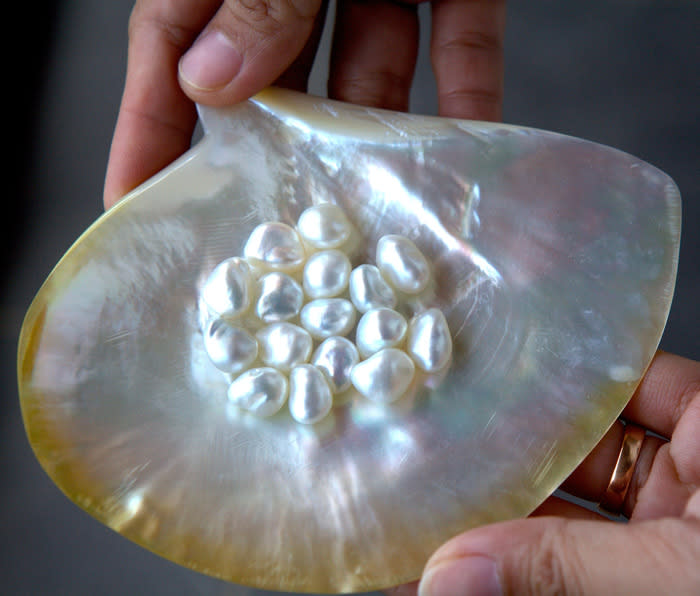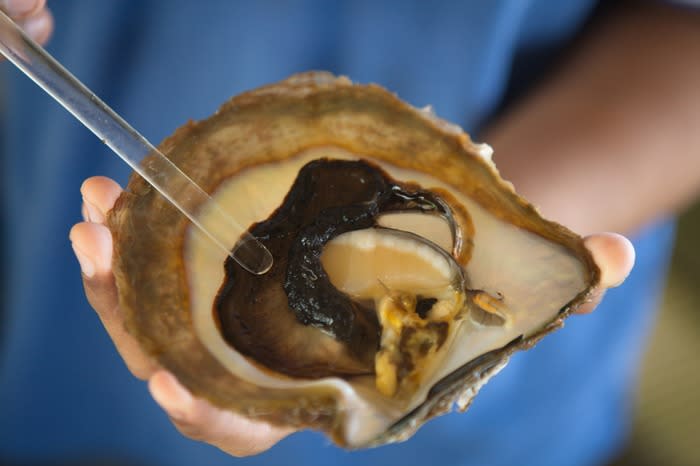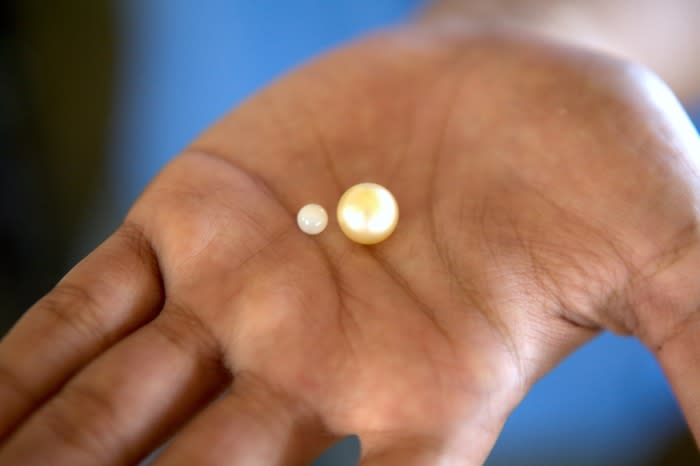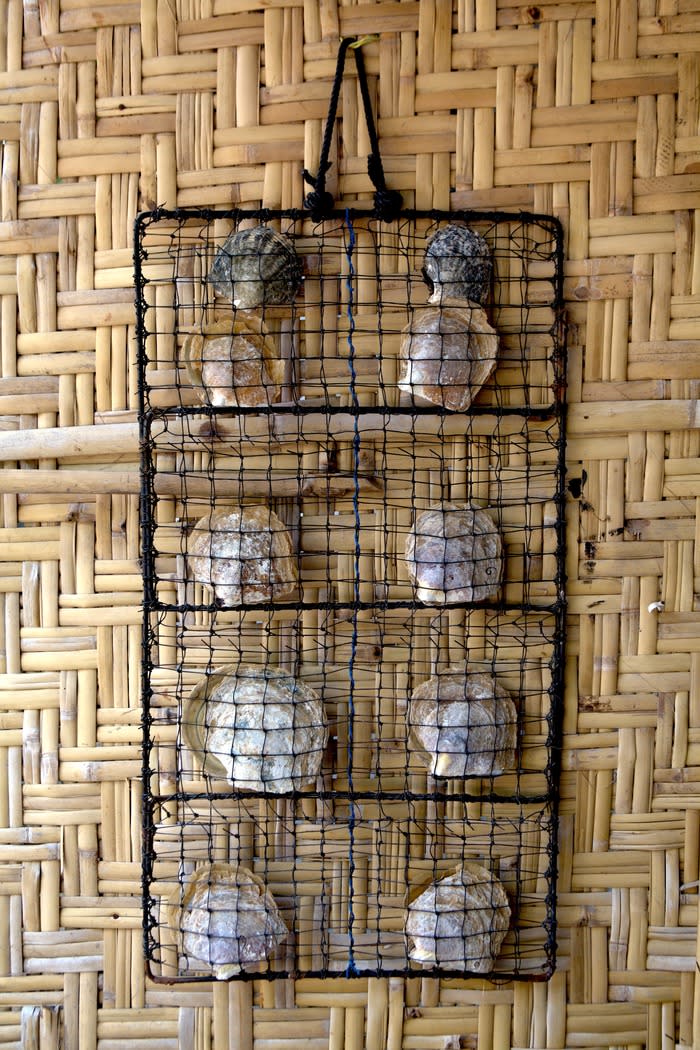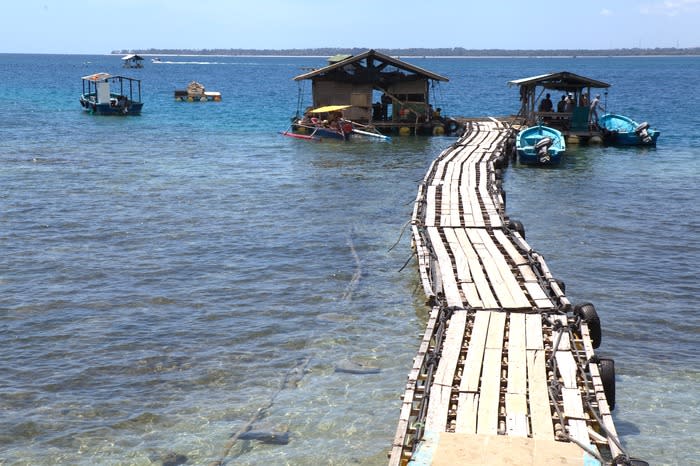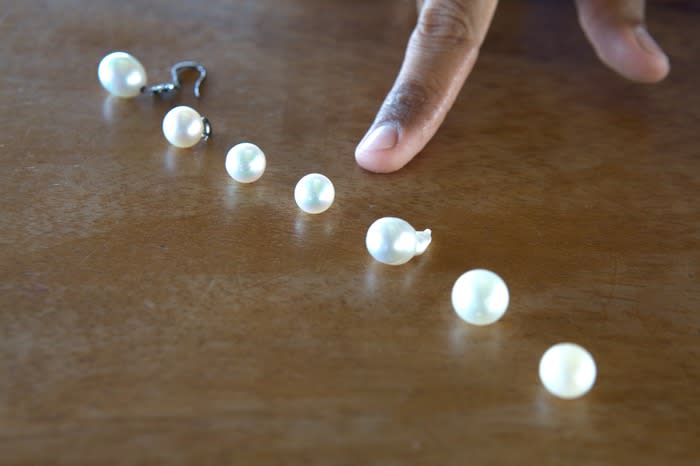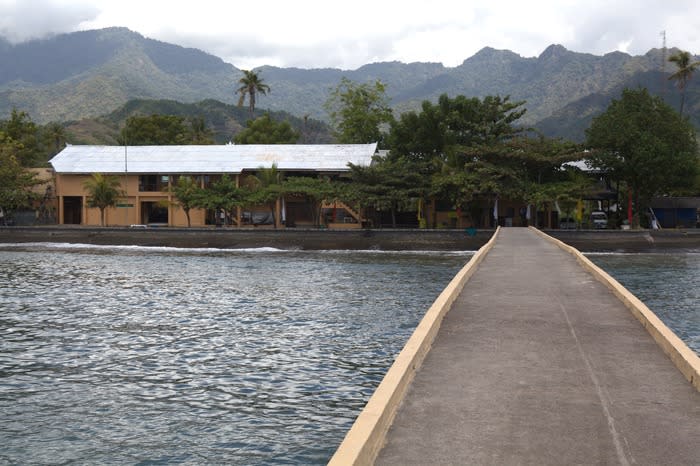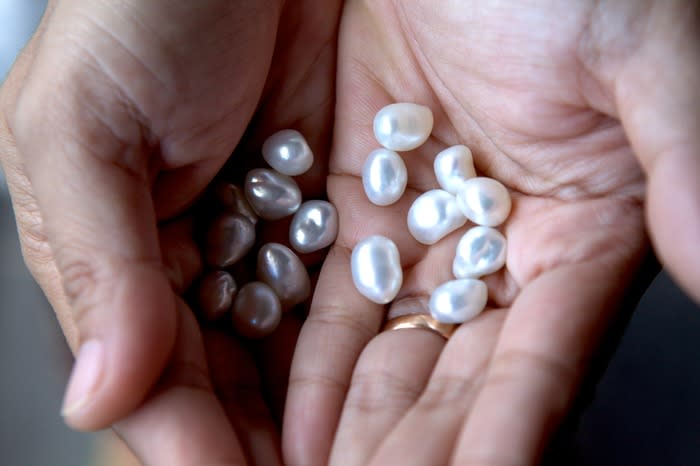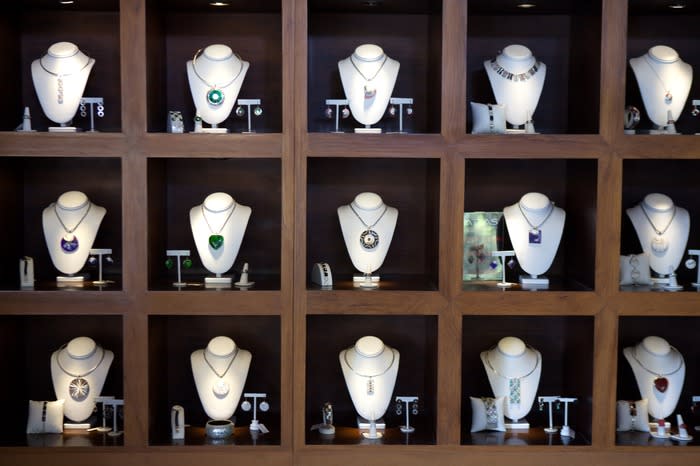The actual worth of Indonesia’s precious South Sea pearls
Jukungs, traditional Indonesian fishing boats, bear visible scars caused by the rough seas they sail. Their outriggers apprea withered and are sometimes haphazardly tied up with rope. The hulls are weather-beaten with lots of flaked-off paint. Yet off the island of Lombok, in the waters of Autore Pearl Farm, jukungs show no signs of slowing down, heeling smoothly and calmly against the calm waves.
This is hardly an obstacle course the jukung pilots see challenging -- unless, of course, they find themselves having to carefully meander around pearl lines or floating wooden huts. These huts are no five-star overwater bungalows, but are primitive workstations for the pearl farm workers.
I am standing on a jetty and marveling at my first glimpse of a pearl farm in tropical paradise. The hot and salty wind from the Pacific South Sea is breezing gently and the tropical sun is scorching, as it should be in August.
No more than a kilometer from the white sand beaches, I see a great number of black buoys floating atop the turquoise water. Though they may oddly resemble Ping-Pong balls jettisoned at sea, they are in fact markers identifying anchored pearl lines 200 meters in length and 15 meters deep.
Attached to those pearl lines are nets called benderas (flags) filled with immature spats or full-grown oysters. One could imagine millions of dollars clinging tightly and swaying with the ocean’s undercurrents.
“We have to be vigilant,” says Gibo, the manager at Autore Pearl Farm, pointing at the sea. “During harvest there are pearl pirates trying to steal our oysters.”
The South Sea pearl farming industry is a billion dollar industry. Australia alone rakes in some US$200 million of it.
Though accurate statistics are hard to come by, to get a decent estimate you just have to do a little math. For jewelers and agents, a single wholesale South Sea pearl can range in price from $100 to $4,000, a value determined by size, shape, color, luster and complexion.
At retail price, a 16-inch South Sea pearl necklace can go for anywhere from $40,000 to $60,000. This is a price that high-profile Autore clients like Scarlett Johansson, Angelina Jolie, and Kate Winslet -- as well as many other fabulously wealthy people -- are willing to pay Mr. Autore for his sea gems.
Such high stakes in forces Mr. Autore, an Australian who owns several pearl farms on the Indonesian archipelago, to invest heavily in 24-hour security the moment his farm starts pulling the nets up at harvest time and opening up mature pearls.
Of course, the pearls are first x-rayed to ensure that indeed, they have growing inside them is what is desired by women the world over. If the farm is lucky, it might even capture that 20 millimeter, perfectly rounded, brilliant and pink pearl. The jackpot!
The Science of South Sea pearls
The science behind pearl cultivating is immensely fascinating. In fact, the formation of a pearl is an immunological response.
What nacre is to an oyster is exactly what antibodies are to humans. As happens when an antigen is attacked by our immune system, nacre is released in an oyster to envelope foreign debris that entered during times of feeding.
Treating all intruders equally, a pearl can even be created out of a grain of sand!
In the wild, pearls grow in a variety of different shelled mollusks in both fresh and saltwater.
Though naturally formed pearls fetch a high price, Mother Nature – at least as far as economics is concerned – is not the most efficient in producing them.
Enter China, the lead freshwater pearl producer, which has gone as far converting rice paddies into lakes for large-scale freshwater pearl farming. Regarding saltwater pearls, a number of varieties lead the way, such as the Japanese Akoya pearl, the French Polynesian Black Tahitian pearl and the South Sea pearl, which is found in Australia, the Philippines and Indonesia.
The oyster hosts used for pearl farming in the South Sea are of a specific breed—white- and gold-lipped oysters, or Pinctada maxima.
They grow naturally in the regional waters, but for the purpose of farming, are bred exhaustively in laboratories.
Though cultured pearl farming appears to be a solid science, it still relies heavily on nature to do most of the work. That is why maxima pearls, for example, can turn out round and oblong or spirally and deformed, the latter type called the baroque pearl, in high demand among pearl connoisseurs.
Colors also vary greatly between freshwater and saltwater pearls. In the South Sea, they turn out to be mostly white, pink, silver or even gold.
At times they are brilliant and smooth-skinned, two highly sought after characteristics; or rough textured—like Jukungs—and completely dull, fetching the lowest price.
Though South Sea pearls produce mostly low levels of brilliance, their nacre is laid on thick and they are among the largest cultivated pearls in the world. “The further east you go,” says Gibo, “the better color the pearls are. In Lombok we have big pearls but unfortunately no shine.”
Such factors are because oysters are highly sensitive organisms; they can even be considered a barometer of the ocean’s cleanliness.
The South Sea pearl farming industry is a billion dollar industry. Australia alone rakes in some US$200 million of it.
In nature, a pearl’s growth can take up to 20 years to form. When cultured, the process lasts just 4 years because conditions at the hatchery, laboratory, and in the water are made most suitable for pearl production.
Temperature of water, salinity, depth of water and amount of available food determines a pearl’s development. At pearl farms the oysters are usually overfed on a nutritious diet of microalgae or phytoplankton grown in laboratories. In nature, however, the oyster has more to worry about.
“There are several threats to the growth of pearls,” says Gibo. “In Flores, one of our plants was shut down when a landslide hit the water near our farm. This landslide was caused by deforestation. The earth that was dumped into the sea altered the level of plankton. Human exploitation, pollution, as well as climate change are also problems.”
Oysters are very moody and the breeding process is time-consuming and laborious. It involves matching up male and female oysters on a tray – preferably those that are the offspring of high-quality pearl-producing parents.
In order for the egg and sperm to be released, they are stressed by dramatically changing the water temperature, mimicking conditions that threaten its survival so that it releases its eggs with hopes of propagating life at the last minute.
“After the egg and sperm is released,” says Gibo, “we gather them in nets and transfer them to large tanks. After 18 days the larvae attach themselves to collector nets. After about 45 days they are moved out to sea and are then regularly inspected for growth. They are cleaned of parasites and barnacles and their surrounding waters are constantly monitored for the next two years.”
At two years of age oysters are well on their way to sexual maturity.
The oysters fit for pearl production are operated upon, and like humans before surgery, they are deprived of food and prepared. They are also dried, a process that naturally opens them up, making it easy to place over the gonad a mussel nucleus from the Mississippi River.
This will induce pearl formation, as the oyster is tricked into believing the mussel nucleus poses a threat to its survival. Mantle tissue is also cut from the oyster (a technique pioneered by Mikimoto, a Japanese pearl farmer, which has revolutionized the industry) and placed inside along with the nucleus.
If the mantle tissue is cut from an oyster with golden mother-of-pearl, the pearl will be golden-colored; if white, the pearl will be white or silver.
If an oyster successfully produces a profitable pearl, it becomes a surrogate once more. A single oyster yields a maximum of two pearls over a period of 6 to 8 years.
Not all oysters, however, are fit for mothering pearls. If they don’t have what it takes, they are sacrificed and their meat is sold to local seafood restaurants. Their shells, meanwhile, are turned into jewelry.
Tending to the “queen of all gems”, it turns out, is as demanding as caring for a newborn infant.
I’ve always been repulsed by vanity and the lengths people will go to artificially beautify themselves, wearing diamond earrings and fur coats and the like. But after visiting several pearl farms in Bali and Lombok and learning about the process of pearl farming, I suppose it’s not all that bad to don the natural product of an animal’s immune system compared to say, something mined from the blood, sweat and tears of a Sierra Leonean boy; or an animal’s protective coat that has been ripped off its body.
Read also:


